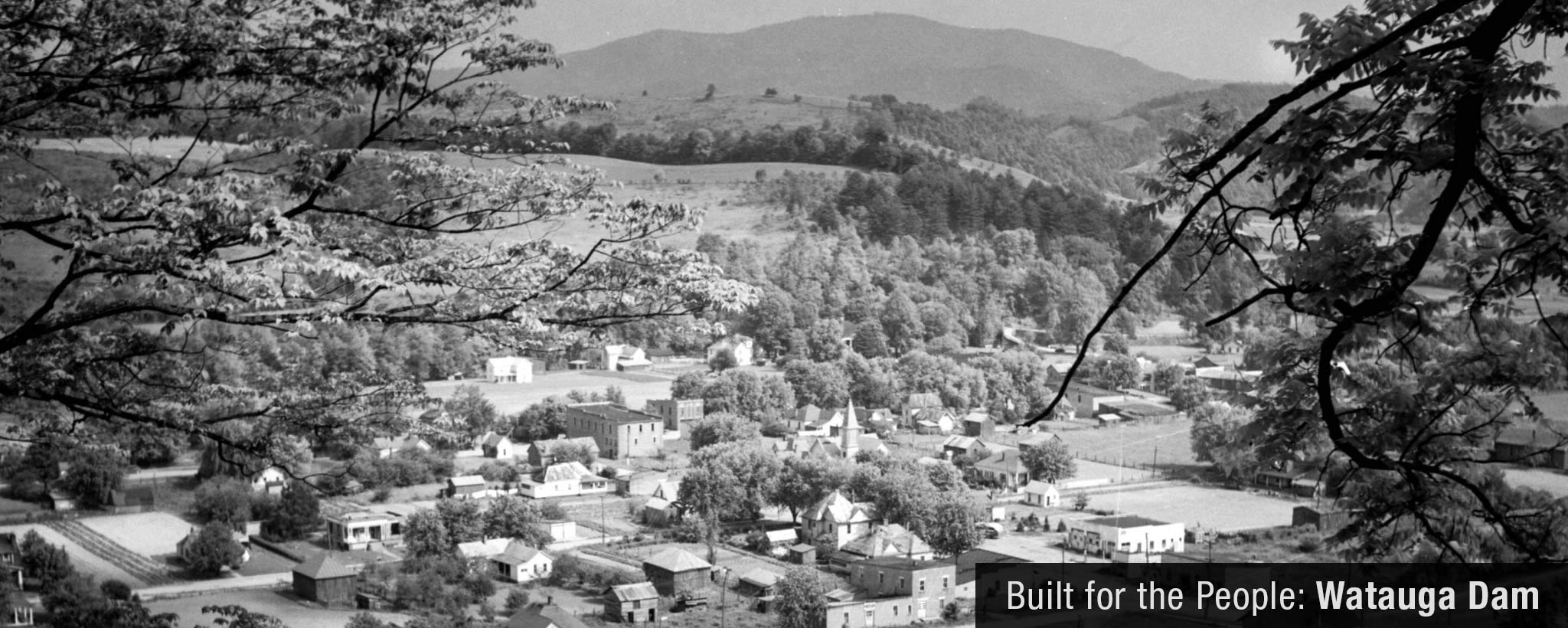
The Town That Wouldn’t Drown
Butler, Tenn., was constantly inundated with floodwaters from the Watauga River—that is, before TVA built Watauga Dam and moved the whole town to higher ground.
Butler, Tenn., had always been at the mercy of the Watauga River. An agricultural community established in the most northeastern corner of the state in the 1760s, it was deluged so often that flooding was seen as a normal part of life. However, when a 1940 flood resulted in the deaths of six people, massive damage to nearby Elizabethton, Tenn., and the washing away of much of the Elizabethton-to-Mountain City railroad, TVA engineers were convinced that flood control of the Watauga was a necessity.
With this decision, the town of Butler was destined to become the largest populated community and the only incorporated town ever to be inundated by a TVA project.
Dam Interrupted
Work on began on Watauga Dam in 1942 but was halted nine months later by World War II as resources were diverted to Douglas and Fontana Dams to meet more immediate power needs in other parts of Tennessee. However, once the war ended, work resumed on the dam in 1946.
At the time, 650 families called Butler home. It had several hotels plus the usual variety of establishments found in a thriving community: drug, grocery, and hardware stores; gas stations; restaurants; doctors’ and dentists’ offices; churches and schools. The high school, Watauga Academy, was a former private school acquired by the county a few years earlier. Butler even had its own Masonic Lodge.
On September 6, 1947, TVA completed purchase of "all the real estate interests of the town, including the city hall and jail building, certain springs and pipelines, all streets, roads, sidewalks and alleys, including easements therein, and the entire water utility, sanitary and storm sewage system properties of the town." The purchase price was $35,000.
“The next mayor of Butler will be a catfish,” quipped a local resident around that time.
Butler to Go
Early in the planning for the reservoir, TVA explored the idea of relocating the entire town, but the city dropped the idea when residents expressed little desire. However, as the moving date drew nearer, interest was rekindled under sponsorship of a local Baptist church minister, the Rev. M. H. Carder. A non-profit corporation was formed that secured options on 200 acres of farmland on the banks of the new reservoir. TVA and the Tennessee State Planning Commission mapped the site and drew up development plans for the new community, complete with street patterns and residential and business areas.
Work on this new community moved rapidly as the time for the impoundment approached. Foundations were poured and five house-moving contractors began moving 125 residences and 50 other structures. One family reported that they slept in their house in Butler on Monday night. On Tuesday morning, their house was moved to its new site, furnishings and all. Tuesday night, the family moved back in and discovered that the ice in the refrigerator had not even melted.
On December 1, 1948, the gates at Watauga Dam closed and the water that would form the reservoir began to rise, flooding the foundations that once made up the original town. On two occasions, once in 1954 and then again in 1983, former residents enjoyed a homecoming of sorts as drought and drawdown conspired to expose the long-covered community. Both times, former residents turned out to see old places and share memories.
At the 1983 homecoming, a former resident said that he didn’t think anyone really wanted to move, but there was no real organized opposition, either. “It was just something you had to do; you didn’t have a choice,” he reflected. “But in the long run, I think the majority of the people improved themselves as a result of the move.”
Life in Butler—“the town that wouldn’t drown,” as it bills itself today—continues its life apace in the mountains of East Tennessee.
